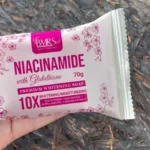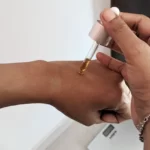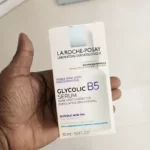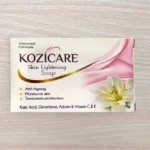Now Reading: Kojic Acid or Hydroquinone: Which Skin Lightener is Right For You?
-
01
Kojic Acid or Hydroquinone: Which Skin Lightener is Right For You?
Kojic Acid or Hydroquinone: Which Skin Lightener is Right For You?
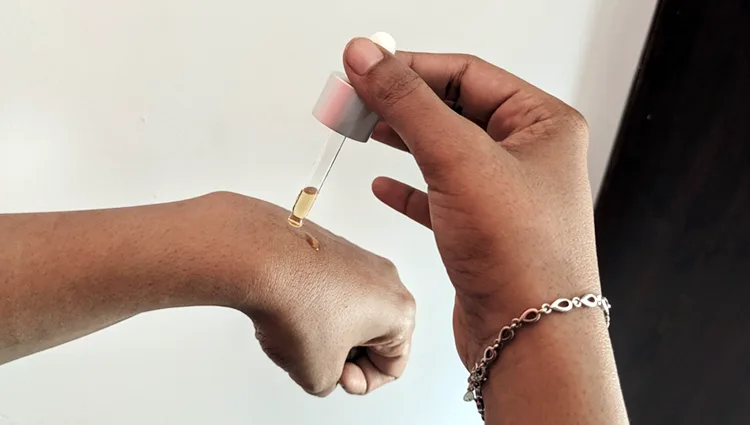
This post may contain affiliate links. Please read our full disclosure here.
Dealing with dark spots, uneven skin tone, or hyperpigmentation? You’re not alone. Hyperpigmentation, a common skin condition that causes patches of skin to become darker than the surrounding area, can be frustrating to deal with. But thankfully, there are ingredients that can help! Two popular options you’ll often see in skincare products are kojic acid and hydroquinone. But which one is right for you?
This post will explore these two powerful skin-lightening ingredients, examining their origins, how they work, their effectiveness, and safety considerations. While I’m a passionate skincare enthusiast, I’m not a dermatologist. Always consult with a qualified professional for personalized advice.
Kojic Acid: An Overview
Derived from several types of fungi (including Aspergillus oryzae, also known as koji), kojic acid is a natural by-product of the fermentation process used to make sake, soy sauce, and rice wine. It has gained popularity in skincare for its ability to treat hyperpigmentation concerns, such as:
- Uneven skin tone
- Melasma
- Post-inflammatory hyperpigmentation (PIH) from acne
- Sunspots (solar lentigines)
- Certain types of birthmarks (like café-au-lait spots)
How does it work?
Kojic acid inhibits tyrosinase, an enzyme crucial for melanin production. Melanin is the pigment responsible for skin color. By reducing melanin production, kojic acid helps lighten darkened areas of the skin.
You’ll find kojic acid in various skincare products like serums, creams, cleansers, and soaps, typically in concentrations of 2% or less.
Important Notes:
- Concentrations above 2% can increase the risk of side effects.
- While kojic acid has some antifungal properties, it’s not a primary treatment for fungal skin infections.
- Prolonged use of kojic acid may increase sun sensitivity, so always use sunscreen.
Hydroquinone: An Overview
Hydroquinone is a potent skin-lightening agent widely recognized for its effectiveness in treating various forms of hyperpigmentation, including:
- Melasma
- Post-inflammatory hyperpigmentation
- Sunspots
- Freckles
How does it work?
Like kojic acid, hydroquinone’s primary mechanism is inhibiting tyrosinase to reduce melanin production. It may also have a secondary effect of decreasing melanocyte production (melanocytes are the cells that produce melanin).
Usage and Effects:
- Hydroquinone is often used to treat melasma and post-inflammatory hyperpigmentation.
- Visible results usually appear within four weeks of consistent use, with full effects taking several months.
- Always conduct a patch test before using hydroquinone, especially if you have sensitive skin.
- Apply hydroquinone after cleansing and toning, followed by a moisturizer and sunscreen. Sun protection is crucial, as sun exposure can worsen hyperpigmentation.
Important Note:
Tri-Luma Cream is the only FDA-approved hydroquinone product in the U.S. It contains hydroquinone, tretinoin, and a corticosteroid.
Kojic Acid vs. Hydroquinone: Which is More Effective?
Both kojic acid and hydroquinone are effective in lightening hyperpigmentation. However, they have different strengths:
- Hydroquinone: Generally considered more potent and faster-acting. This study found that 4% hydroquinone cream was more effective than 0.75% kojic acid cream in treating facial melasma after 4 weeks.
- Kojic Acid: While often slower to produce results, kojic acid is generally considered less irritating and is gaining popularity as a safer alternative to hydroquinone.
Synergistic Effects: Interestingly, a 2013 study showed that combining hydroquinone and kojic acid could lead to even better results in reducing melanin than using kojic acid alone.
It’s important to note that individual responses can vary, and more research is needed to definitively conclude which ingredient is superior.
Are Kojic Acid and Hydroquinone Safe?
Both kojic acid and hydroquinone have potential side effects:
Kojic Acid:
- Generally considered safe for cosmetic use in concentrations up to 2% in leave-on products and higher in rinse-off products.
- The most common side effect is contact dermatitis, causing redness, irritation, itching, and rashes. This is more likely to occur with higher concentrations or in people with sensitive skin.
- The Cosmetic Ingredient Review (CIR) has deemed kojic acid safe at 1% for leave-on products.
Hydroquinone:
- Can cause temporary redness, dryness, and irritation, especially in those with sensitive skin.
- More serious side effects include allergic contact dermatitis, stinging, and, rarely, ochronosis (a blue-black discoloration of the skin), which is more common in darker skin tones.
- Due to potential risks, hydroquinone is available by prescription only in the U.S. and is banned for over-the-counter use in the EU and Australia.
- Long-term use of hydroquinone, especially at higher concentrations, is associated with increased risks.
Always conduct a patch test and consult a dermatologist before using either ingredient, especially if you have sensitive skin or medium-to-dark skin tones.
The Verdict
Both kojic acid and hydroquinone are scientifically supported treatments for hyperpigmentation.
- Kojic Acid: A good option for those seeking a natural alternative to hydroquinone, especially if you have sensitive skin.
- Hydroquinone: While it has a more controversial safety profile, it can be very effective under the guidance of a dermatologist.
The best choice for you will depend on your individual skin type, concerns, and risk tolerance. A dermatologist can help you weigh the benefits and risks of each ingredient and create a personalized treatment plan to address your hyperpigmentation concerns safely and effectively.






